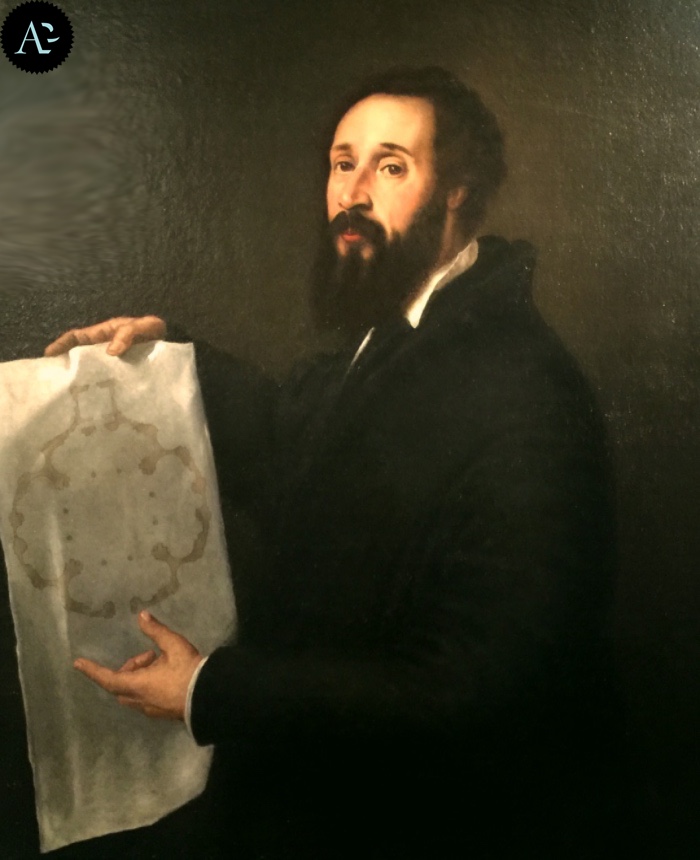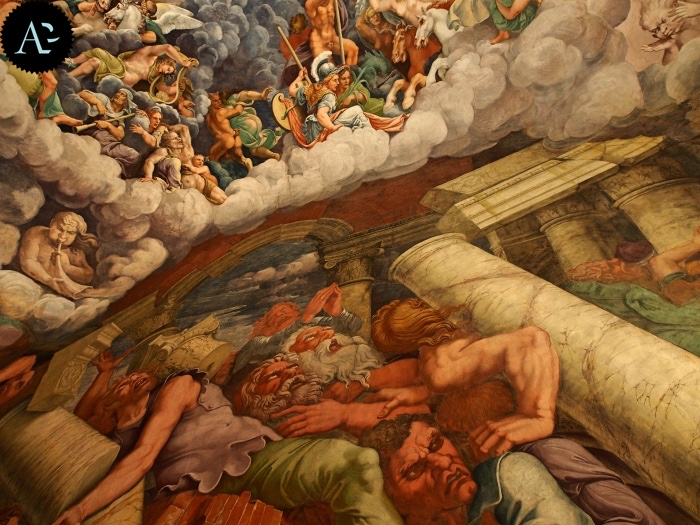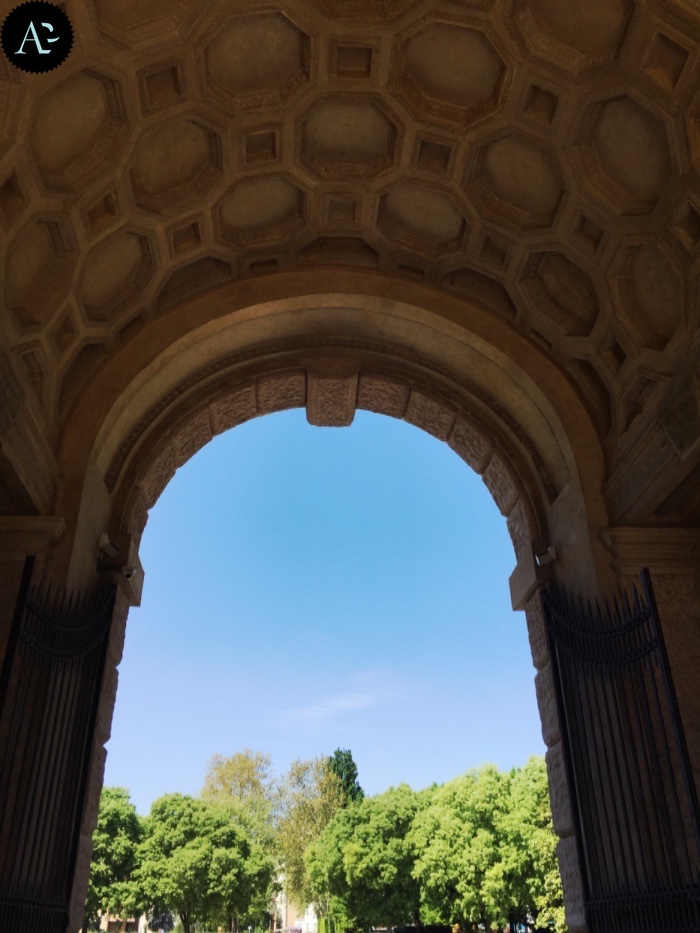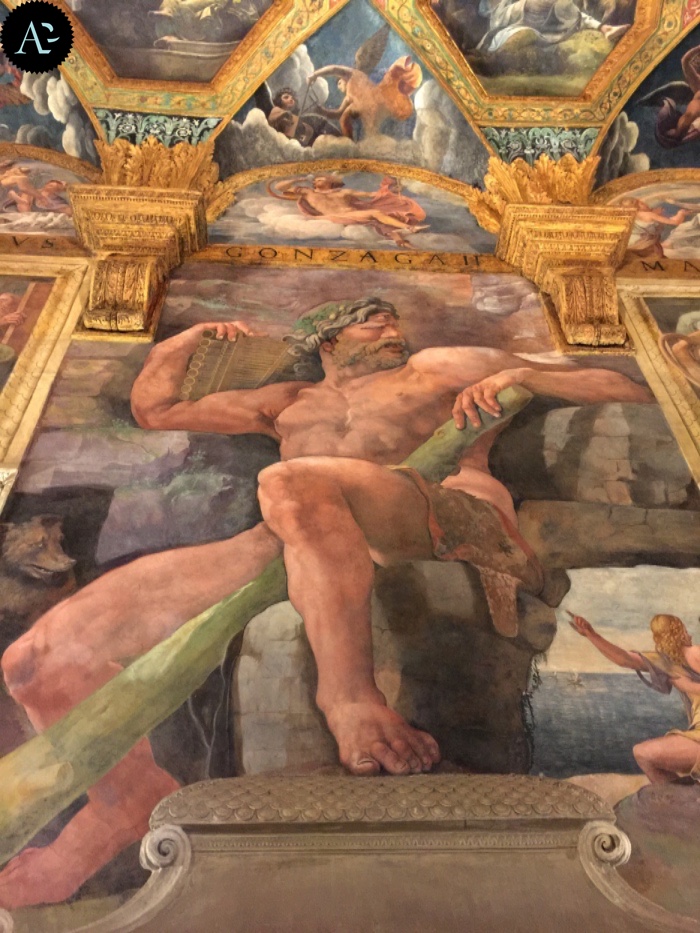
Tiziano Vecellio, Giulio Romano Portrait (1536-1540)
GIULIO ROMANO, LIFE AND WORKS
Giulio Romano, life and works. Among things you must see in Mantua, there’s certainly the Te Palace, as I wrote in the post I dedicated to Italian capital of culture 2016.
The Palace, commissioned by Frederick II of Gonzaga, is the masterpiece of Mannerist architecture, because Giulio Romano’s project transformed the Gonzaga family’s stables into a sumptuous villa.
READ ALSO: Free museums in Mantua, a cheap visit to the city of the Gonzaga family.

Chamber of the Giants, Te Palace.
When you will go to Mantua and visit the Te Palace, stop for a moment at the entrance of the building. And before you start your visit, try to imagine that you are at the time of the Gonzaga family, so that you will be able to understand what creating a building which had to amaze guests meant.
At the entrance of the Palace you’ll find a brief story of Giulio Romano, the architect who built it.
The birth go Giulio Pippi, called “Romano” in reference to Rome his birth place, is still unknown: 1499 or 1492.
Soon after joining Raphael’s studio at a very early age Giulio assisted his master, being charged with several tasks of significance.
During his Rome years he displayed great ability both in drawing and architecture. After the death of his master in 1520, Giulio was considered the greatest heir of Raphael’s manner.
He moved to the Mantuan court of Federico II Gonzaga in 1524 and he soon took charge of the architectural and decorative projects of the court.
In addiction to his direction of the works for the Te Palace (1525-1535), he restructured and decorated the apartment of Troy in the Ducal Palace (1536-1539).
Here he also drew the projects for the Rustic Pavillion. In 1526 he was nominated Prefect of the Gonzaga buildings and Supervisor of the streets in Mantua.
At this point of his career he began to direct a huge studio capable of rapidly turning his drawings into paintings and stuccoes.
His fame brought him commissions in Verona, Parma, Modena, Reggio Emilia, Ferrara, Milan and Vicenza.
According to Vasari, if he had not died prematurely in 1546, he would have become architect of the Fabric of St Peter’s in Rome.
READ ALSO: What to do in Parma, discovering Correggio’s masterpieces.

Te Palace, Mantua

Chamber of Cupid and Psyche, Te Palace
(Text with Giulio Romano’s description of life is based on the text on display at of the Palazzo Te and partially reworked)


quando ero ragazzino il mondo lo vedevo minaccioso grande e potente e l’italia bella fragile e da custodire poi crescendo mi resi conto che era tutto il contrario e i mattoni che servirono a edificarli erano uguali per tutte le nazioni ma il collante spirituale era diverso nazione per nazione e il nostro collante spirituale si chiamava – giulio romano – raffaello s..- michelangelo b. – leonardo da vinci – antonello da m. – tiziano – bramante – sangallo – giorgione – tiziano – correggio – veronese – e altri 2000 nomi stellari poi la fisica molecolare un nome per tutti enrico fermi – la cibernetiaca e i computer con adriano olivetti – e per chiudere e rimanere in tema palazzo te con la caduta dei giganti di giulio romano in mantova mi rende orgoglioso di tutto questo punto .italia@madredelmondo
Un commento ermetico il tuo, ma denso di significato.
Il nostro collante spirituale è stato grandioso in passato e lo è ancora. Si possono vedere tanti posti belli, ma un concentrato di bellezza, talento e creatività come in Italia non si vede da nessuna parte 😉
Peccato però che oggi siamo solo nanerottoli che si accontentano di vivere sulle spalle di antichi giganti.
Spiegati meglio.